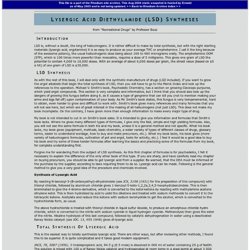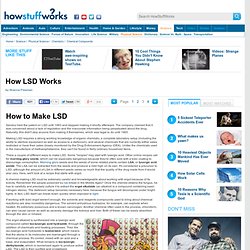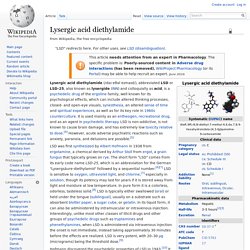

Lysergic Acid Diethylamide (LSD) Syntheses. From "Recreational Drugs" by Professor Buzz Introduction LSD is, without a doubt, the king of hallucinogens.

How to Make LSD" Sandoz held the patent on LSD until 1963 and stopped making it shortly afterward.

The company claimed that it was concerned about a lack of regulation and the inaccurate information being perpetuated about the drug. Naturally, this didn't stop anyone from making it themselves, which was legal to do until 1965. Making LSD requires a strong working knowledge of organic chemistry, a complete laboratory setup (including the ability to sterilize equipment as well as access to a darkroom), and several chemicals that are currently either sales restricted or have their sales closely monitored by the Drug Enforcement Agency (DEA).
Unlike the chemicals used in the manufacture of methamphetamine, they can't be found in fairly ordinary household items. There a couple of different ways to make LSD. Lysergic acid diethylamide. Lysergic acid diethylamide, abbreviated LSD or LSD-25, also known as lysergide (INN) and colloquially as acid, is a semisynthetic psychedelic drug of the ergoline family, well known for its psychological effects which can include altered thinking processes, closed- and open-eye visuals, synesthesia, an altered sense of time and spiritual experiences, as well as for its key role in 1960s counterculture.

It is used mainly as an entheogen, recreational drug, and as an agent in psychedelic therapy. LSD is non-addictive, is not known to cause brain damage, and has extremely low toxicity relative to dose.[3] However, acute adverse psychiatric reactions such as anxiety, paranoia, and delusions are possible.[4] LSD was first synthesized by Albert Hofmann in 1938 from ergotamine, a chemical derived by Arthur Stoll from ergot, a grain fungus that typically grows on rye. Effects.